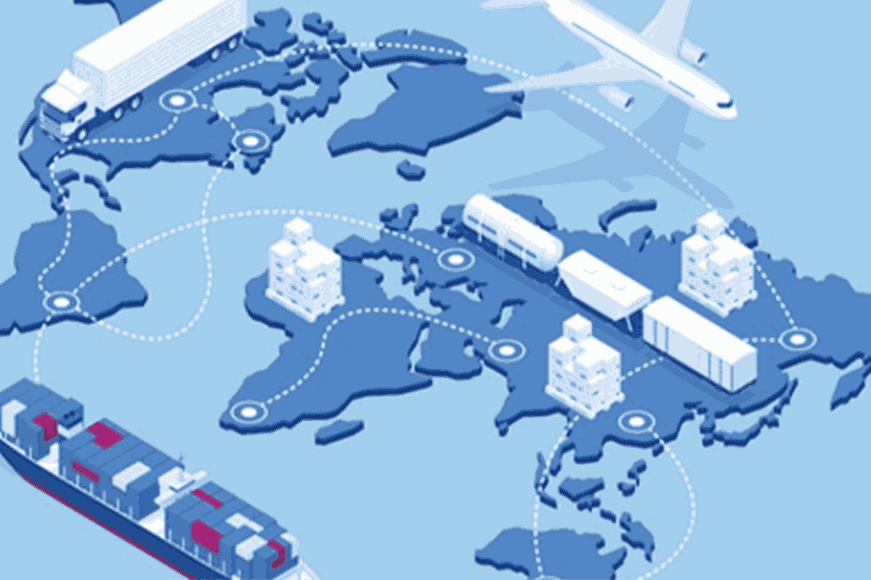Mastering the Art of Importing and Exporting: Key Cost Considerations and Strategies

As globalization continues to reshape the business landscape, importing and exporting goods has become a critical component of many business operations. However, navigating the world of international trade can be challenging, particularly when it comes to understanding the costs involved.
Tariffs and Duties
One of the most significant costs associated with importing and exporting is tariffs and duties. These are taxes imposed by governments on goods that cross their borders. The amount of tariffs and duties you'll pay depends on the type of goods you're importing or exporting, the value of those goods, and the destination country.
To minimize the impact of tariffs and duties on your business, it's essential to understand the trade agreements and regulations that apply to your products. You may also want to explore options like free trade zones or preferential trade agreements, which can help reduce or eliminate tariffs and duties.
Shipping and Logistics
Shipping and logistics costs are another significant factor to consider when importing and exporting goods. These costs include transportation fees, customs clearance, and storage and handling fees. Shipping costs can vary depending on the size and weight of your goods, the shipping method you choose, and the destination country.
To reduce shipping and logistics costs, it's crucial to optimize your supply chain. This can involve working with reliable logistics partners, optimizing your inventory management, and leveraging technology solutions to streamline your shipping processes.
Currency Exchange Rates
When importing and exporting goods, you'll also need to factor in currency exchange rates. Fluctuations in currency exchange rates can significantly impact the cost of your goods, as well as your profitability.
To mitigate the impact of currency exchange rates, you may want to consider using currency hedging strategies, such as forward contracts or options, which can help lock in favorable exchange rates.
Compliance and Regulatory Costs
Compliance and regulatory costs are another important factors to consider when importing and exporting goods. These costs include fees associated with obtaining necessary permits and certifications, as well as costs associated with compliance with trade regulations and customs requirements.
To minimize compliance and regulatory costs, it's essential to stay up-to-date on the latest regulations and requirements. You may also want to consider working with a customs broker or freight forwarder, who can help ensure compliance with regulatory requirements and streamline the customs clearance process.
Insurance and Risk Management
Finally, when importing and exporting goods, it's critical to consider insurance and risk management. These costs include insurance premiums to protect against loss or damage during transit, as well as costs associated with managing other types of risks, such as compliance risks or supply chain disruptions.
To reduce insurance and risk management costs, it's essential to develop a comprehensive risk management strategy. This may involve working with insurance providers to find the most cost-effective coverage options, as well as implementing risk management processes to minimize the likelihood of disruptions or losses.
Product Labelling and Packaging Costs
Finally, when importing and exporting goods, it's important to consider the marketing and sales costs associated with entering new markets. This can include costs associated with market research, advertising, and sales team expansion.
To minimize marketing and sales costs, it's important to develop a targeted market entry strategy that leverages data-driven insights to identify high-potential markets. You may also want to consider partnering with local distributors or sales agents who have established networks and can help you navigate the local market.
Intellectual Property Protection Costs
When importing and exporting goods, it's important to consider the cost of protecting your intellectual property (IP). This can include costs associated with obtaining patents, trademarks, and copyrights, as well as costs associated with enforcing your IP rights in foreign markets.
To minimize IP protection costs, it's important to conduct thorough research to understand the specific IP requirements and regulations for each market you plan to enter. You may also want to work with an IP attorney who can help you navigate the complex legal landscape and ensure that your IP rights are protected.
Quality Control and Product Testing Costs
Another important factor to consider when importing and exporting goods is the cost of quality control and product testing. Different countries have different product testing and quality control requirements, and failure to comply with these requirements can result in fines, recalls, or damage to your brand reputation.
To minimize quality control and product testing costs, it's important to research the specific requirements for each market you plan to enter. You may also want to work with a third-party testing agency that can help you ensure that your products meet all regulatory requirements.
Payment Processing Fees
Finally, when importing and exporting goods, it's important to consider the cost of payment processing fees. Different payment methods have different fees associated with them, and these fees can vary depending on the payment method, the currency used, and the transaction amount.
To minimize payment processing fees, it's important to explore different payment options and negotiate favorable rates with payment processors. You may also want to consider using a currency exchange provider that can offer competitive rates and minimize the impact of currency exchange fees.
The Importance of Strategic Planning in Importing and Exporting
Importing and exporting goods can be a complex and costly process, but with careful planning and management, it can also be highly profitable. By considering all of the various costs involved and implementing strategies to minimize these costs, you can maximize your profits and successfully compete in the global marketplace. It's important to stay up-to-date with the latest regulations and requirements, work with trusted partners and advisors, and continuously evaluate and optimize your supply chain to ensure that you're operating as efficiently and cost-effectively as possible.
No posts found
Write a reviewRecent posts
-
06/27/2024The Ultimate Guide to Cinnamon Oil Uses and Benefits
-
06/27/2024Benefits and Uses of Ginger Oil in Holistic Health
-
06/27/202410 Frankincense oil Benefits and Uses For Healthcare
